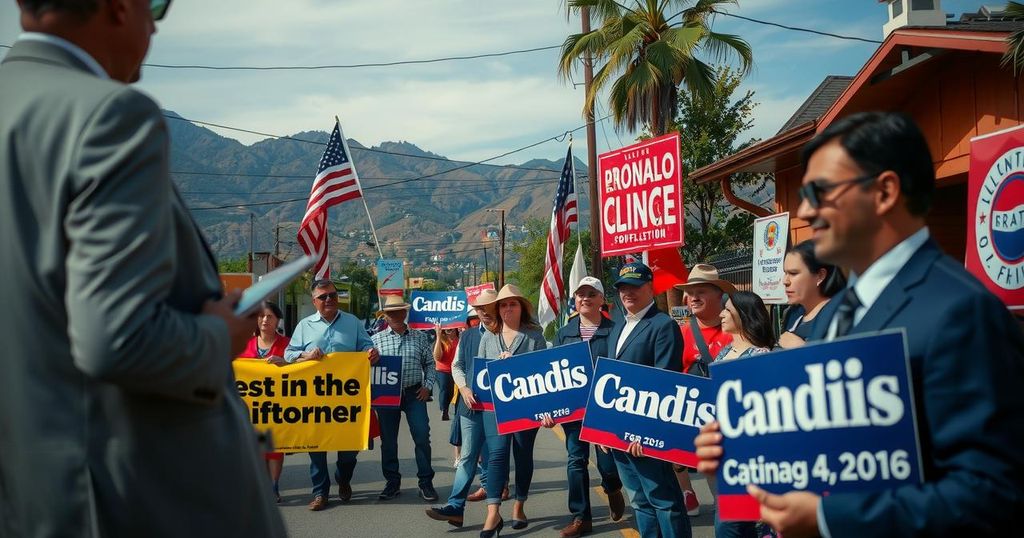Trump and Harris Race for Latino Votes in Key Swing States

Both Kamala Harris and Donald Trump are focusing their campaigns on Arizona and Nevada in a final push for Latino votes ahead of the November election. Polls show a close race, with Latino support critical for both candidates, as Trump captures increasing support within this demographic. Meanwhile, concerns about voter turnout, particularly among Hispanics, persist, posing challenges for both parties as they seek to galvanize their bases.
In the heated race for the White House ahead of the November 5 election, both Kamala Harris and Donald Trump have intensified their campaigns in two pivotal swing states: Arizona and Nevada. Recognizing the significance of Latino voters, both candidates hosted events on the same day aimed at this demographic, whose electoral participation could decisively influence the election outcome. In an unusual move, Donald Trump took an early detour to Albuquerque, New Mexico, a state he lost in the previous election and one predicted to be non-competitive in this cycle. During his rally, Trump asserted, “I’m here for one simple reason: I like you very much, and it’s good for my credentials with the Hispanic or Latino community.” The latest polling data shows that despite a historical preference for Democratic candidates among Latinos, Trump’s appeal is gaining traction, with him garnering 42 percent of Hispanic voter support compared to Harris’ 52 percent, a significant drop from Biden’s 66 percent in 2020. However, Trump’s previous rally in New York stirred controversy when a comedian made insensitive jokes about migrants, leading some Latino leaders to withdraw their support from him. Meanwhile, Harris hosted a rally in Phoenix before continuing on to Nevada, where pop culture icon Jennifer Lopez is set to appear at one of her events. This mobilization is particularly critical as polls indicate a virtual tie between the candidates, with Harris holding slight advantages in states like Wisconsin and Michigan, and Trump leading in Georgia, North Carolina, and Arizona. Amidst this intense campaign, a notable concern emerges regarding voter turnout among Hispanics, who, as of recent reports, make up only 2 percent of early votes, falling short of their eligible voter share. Conversely, Black voters are participating at higher rates, accounting for 22 percent of early ballots cast. Furthermore, early voting data indicates that women are showing significant engagement, potentially favoring Harris’s campaign focus on reproductive rights. As both candidates seek to galvanize their bases, the effectiveness of their appeals to traditional voting blocs—young, Latino men for Republicans and college-educated, white women for Democrats—may ultimately determine the election’s trajectory. Mike Madrid, a seasoned Republican political consultant, remarked, “Whoever is right will win the race.” The strategies and performances identified in this final stretch are essential, as both parties vie for the loyalty and turnout of key demographic groups in a landscape dominated by tight races.
The upcoming presidential election is particularly significant due to the pivotal role of swing states, with Arizona and Nevada emerging as critical battlegrounds. The Latino electorate, which constitutes a substantial segment of eligible voters this election cycle, has historically leaned Democratic. However, recent trends suggest a shift towards Republican candidates, particularly as both parties seek to address the needs and concerns of minority groups during their campaigns. This election is further complicated by varying turnout rates among different demographics, which could significantly impact the final results. Both Trump and Harris are focusing their efforts on maximizing support in these swing states, which are crucial for securing the necessary electoral votes.
In summary, the race for the Latino vote in key swing states like Arizona and Nevada is shaping the strategies of both Kamala Harris and Donald Trump. With polls indicating a closely contested election, the responses of Latino voters and their turnout rates will be vital in determining the election’s outcome. The dynamic between Latino and Black voter participation, along with the engagement of women voters, adds additional layers of complexity to an already competitive race. As both candidates intensify their outreach efforts in these final days, their ability to connect with these demographic groups could prove decisive.
Original Source: www.aljazeera.com







